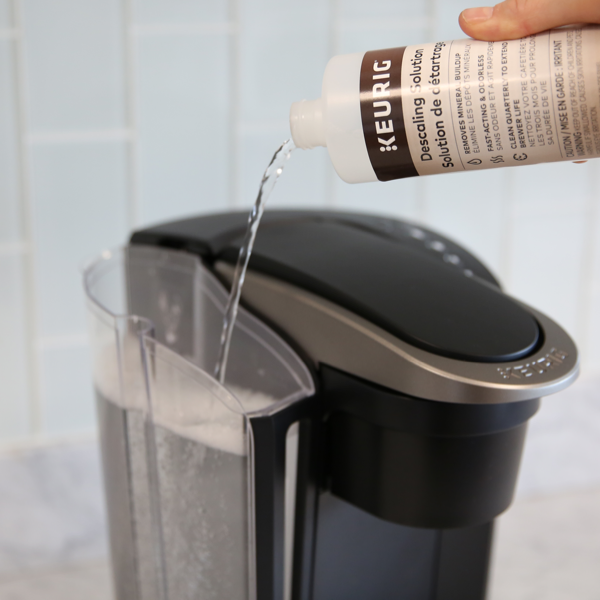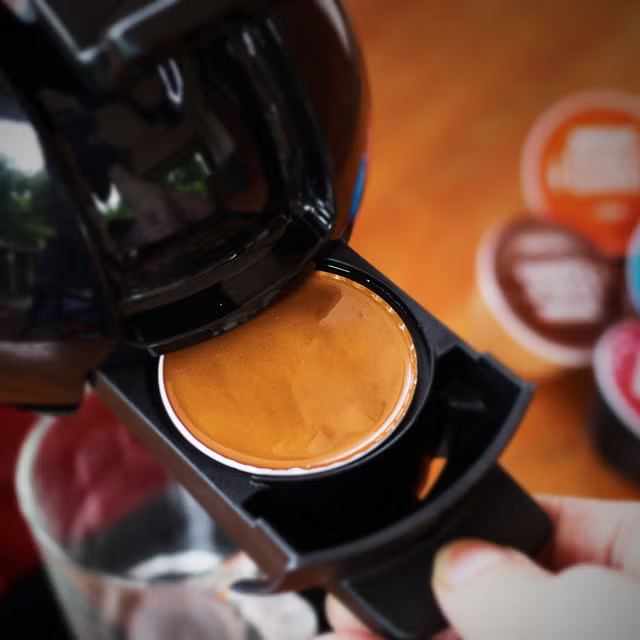
For coffee enthusiasts, a Keurig coffee maker is often a kitchen staple, known for its convenience and ability to brew a single perfect cup at a time. However, like any appliance, it requires regular maintenance to function at its best. So, what’s the best way to clean a Keurig coffee maker? Understanding the correct procedures can extend the life of your machine and ensure your coffee tastes as fresh and delicious as possible. In this article, we’ll delve into practical steps and tips for cleaning your Keurig, ensuring it stays in top condition and continues to deliver great-tasting coffee.
Why Cleaning Your Keurig is Essential
Regular cleaning isn’t just about hygiene; it significantly impacts the performance and longevity of your Keurig coffee maker.
Preventing Build-Up
Over time, minerals from water, coffee residues, and oils accumulate in your coffee maker. This build-up can clog your machine, affect the taste of your coffee, and even lead to mechanical failures. Regular cleaning helps prevent these issues, ensuring smooth operation and consistent coffee quality.
Ensuring Optimal Performance
A clean coffee maker functions more efficiently. Regular maintenance, including descaling and cleaning removable parts, helps the machine heat water correctly and brew coffee at the ideal temperature. This not only improves the taste but also reduces the time it takes to brew a cup, making your morning routine more convenient.
Health and Safety
Bacteria and mold can grow in the damp, dark interior of your coffee maker if it’s not cleaned regularly. This can pose health risks over time. Regular cleaning minimizes this risk, ensuring that every cup of coffee is safe to drink.
Daily Cleaning Routine
Incorporate simple daily cleaning habits to keep your Keurig in good shape.
Emptying the Drip Tray
After each use, make it a habit to empty the drip tray. The accumulation of coffee drips and water can create a breeding ground for bacteria. By keeping the drip tray clean and dry, you reduce the risk of bacterial growth.
Running Clean Water Through the Machine
At the end of each day, run a cycle of clean water through the machine without a K-Cup. This simple step flushes out any remaining coffee residue and helps maintain the cleanliness of the internal components. It’s a quick process that can make a big difference in the machine’s performance and longevity.
Wiping Down Exterior Surfaces
Wipe down the exterior of your Keurig, including the coffee outlet and K-Cup holder, with a damp cloth. This helps remove any coffee stains or splashes, keeping your machine looking clean and new. Using a mild detergent can help tackle any stubborn stains or build-up on the exterior surfaces.
Weekly Deep Cleaning
A more thorough cleaning should be done on a weekly basis.
Cleaning the K-Cup Holder
Remove the K-Cup holder and rinse it under warm water. Use a small brush or a paperclip to unclog any coffee grounds stuck in the needle. This helps prevent blockages that can disrupt the brewing process and affect the taste of your coffee. Make sure to dry the holder completely before placing it back into the machine.
Washing the Water Reservoir
Detach the water reservoir and wash it with warm, soapy water. Rinse thoroughly to remove all soap residues. Allow it to air dry before reattaching it to the machine. Keeping the reservoir clean ensures that the water used for brewing is free from contaminants that could affect the flavor and quality of your coffee.
Descaling the Machine
Descaling is vital to remove mineral build-up from the internal components of your Keurig. Fill the reservoir with a descaling solution or a mixture of white vinegar and water. Run the machine through a brewing cycle without a K-Cup until the reservoir is empty. Then, rinse the reservoir and run several cycles with clean water to remove any vinegar taste. This process helps maintain the efficiency and longevity of your Keurig.
Monthly Maintenance
Monthly maintenance helps tackle any deep-seated dirt and ensures the longevity of your coffee maker.
Replacing the Water Filter
If your Keurig model has a water filter, it’s important to replace it every two months or after 60 tank refills. This ensures that the water used for brewing is clean and free from impurities that can affect the taste of your coffee. Follow the manufacturer’s instructions for replacing the filter, and make sure to soak the new filter in water before installing it.
Checking the Needles
Inspect the needles that puncture the K-Cups for any build-up or blockages. Use a small paperclip to dislodge any stuck debris. Keeping the needles clean ensures that the coffee flows smoothly and the K-Cups are properly punctured during brewing.
Inspecting the Seals and Gaskets
Check the seals and gaskets around the water reservoir and K-Cup holder for any signs of wear or damage. Replacing worn gaskets can prevent leaks and ensure that the machine operates correctly. Regular inspection can help identify potential issues before they become major problems.
Troubleshooting Common Issues
Even with regular maintenance, issues can sometimes arise. Knowing how to troubleshoot these can save you time and frustration.
Machine Not Brewing
If your Keurig is not brewing, check for blockages in the needles and ensure that the water reservoir is seated correctly. Running a cycle with clean water can also help to clear any minor issues. If the problem persists, try descaling the machine to remove any internal build-up that might be causing the issue.
Coffee Tastes Off
If the taste of your coffee seems off, it might be time to clean or replace the water filter. Descaling the machine and thoroughly cleaning the K-Cup holder and water reservoir can also help improve the flavor. Sometimes, using filtered water for brewing can make a noticeable difference in the taste of your coffee.
Leaking Water
If you notice water leaking from your Keurig, check the seals and gaskets for any signs of wear. Ensuring that all parts are properly seated and that there are no blockages can often resolve leakage issues. If the problem continues, it might be necessary to replace worn parts or consult the manufacturer for further assistance.
 Using Natural Cleaners
Using Natural Cleaners
Natural cleaners can be an effective and eco-friendly way to maintain your Keurig coffee maker.
White Vinegar
White vinegar is excellent for descaling and disinfecting your Keurig. Its acidic properties break down mineral build-up and kill bacteria. Simply mix equal parts vinegar and water and follow the descaling steps outlined earlier. Running several cycles with clean water afterward ensures that any vinegar residue is thoroughly rinsed out.
Baking Soda
Baking soda can be used to clean the exterior surfaces and remove stubborn stains. Make a paste of baking soda and water, apply it to the stains, and gently scrub with a soft cloth. Rinse with clean water and dry thoroughly. Baking soda is a non-abrasive cleaner that’s safe for most surfaces.
Lemon Juice
Lemon juice is another natural descaler. Its acidic nature helps dissolve mineral deposits, and it leaves a pleasant fragrance. Mix lemon juice with water and run it through the machine as you would with vinegar. Ensure you rinse thoroughly with clean water to remove any remaining lemon juice.
Extending the Life of Your Keurig
By following these cleaning routines and tips, you can significantly extend the life of your Keurig coffee maker.
Regular Maintenance
Regular maintenance and periodic descaling ensure that your Keurig runs efficiently and lasts longer. Consistency in following these routines prevents the build-up that can lead to mechanical problems.
Using Filtered Water
Using filtered water can reduce mineral build-up and improve the taste of your coffee. It’s a simple step that can enhance both the longevity and performance of your machine.
Proper Storage
If you won’t be using your Keurig for an extended period, empty the water reservoir and store the machine in a dry place. This prevents the growth of mold and bacteria, ensuring that your Keurig is ready to use when you need it.
Summarizing the Insights: Keurig Coffee Maker Maintenance
So, how to clean a Keurig coffee maker effectively? Regular cleaning, both daily and deep, is essential for maintaining optimal performance and taste. From emptying the drip tray and running clean water cycles daily to weekly deep cleaning of the K-Cup holder and water reservoir, each step plays a crucial role. Monthly maintenance, including descaling and replacing the water filter, ensures that your machine continues to function efficiently. By avoiding common mistakes and using natural cleaners, you can keep your Keurig coffee maker in top condition. Consistent maintenance not only extends the machine’s life but also guarantees that every cup of coffee you brew is fresh, delicious, and safe to drink.

